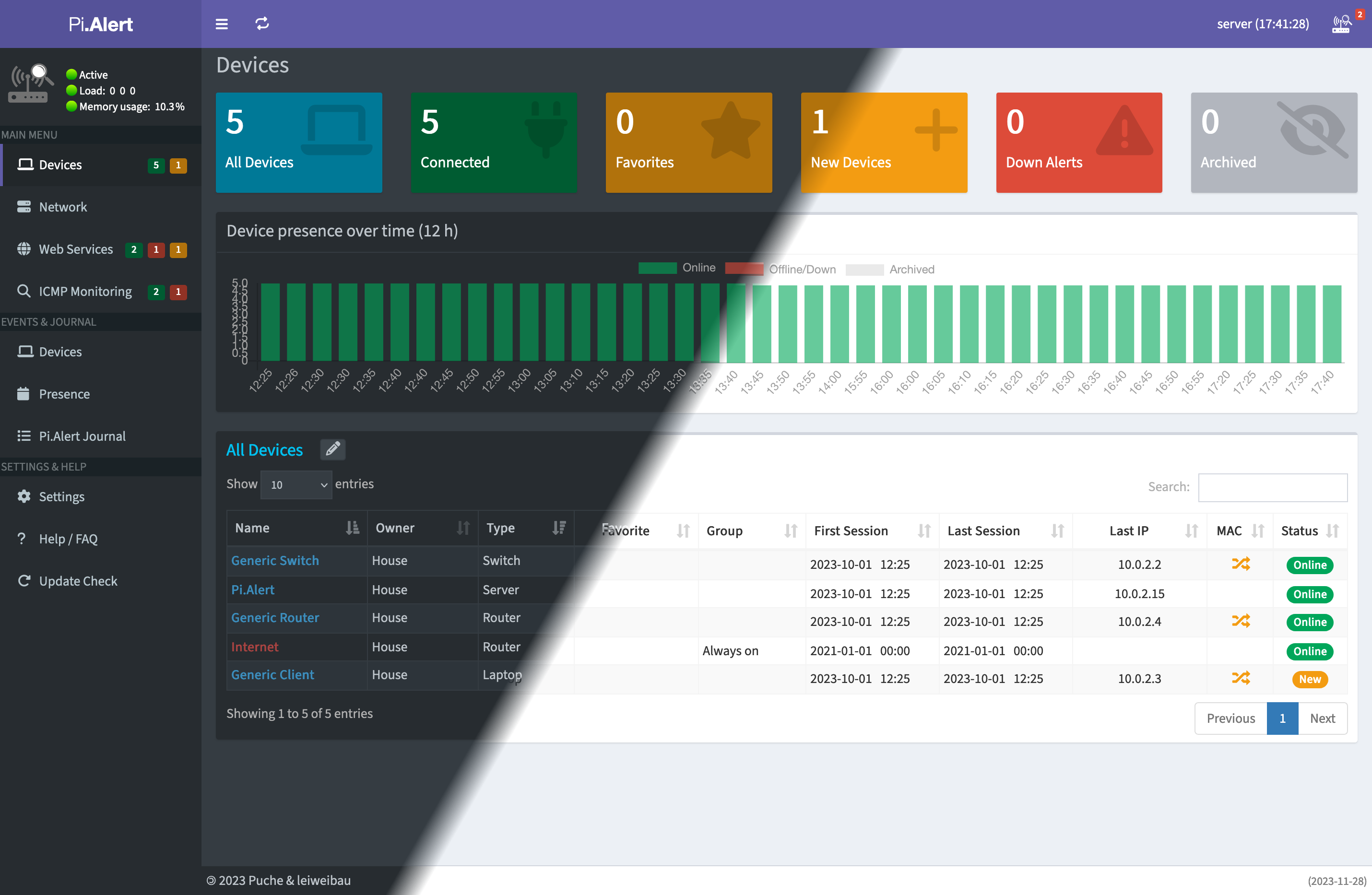🐟Install Pi.Alert as a NFV🚨
 Ronald Bartels
Ronald Bartels1 min read

First make sure libvirtd is installed:
sudo apt-get update
sudo apt-get upgrade
sudo apt-get install qemu-kvm libvirt-daemon-system libvirt-clients virtinst cpu-checker libguestfs-tools libosinfo-bin
sudo apt-get remove dnsmasq-base
sudo virsh net-autostart --disable default
Now we install debian:
sudo virt-install \
--name debian \
--ram 1024 \
--vcpus 1 \
--disk path=/var/lib/libvirt/images/debian12.qcow2,size=4 \
--os-variant debian10 \
--network bridge=br0,model=virtio \
--console pty,target_type=serial \
--extra-args="console=ttyS0,115200n8" \
--graphics none \
--location 'http://deb.debian.org/debian/dists/bookworm/main/installer-amd64/'
Install using the normal process.
Next we install pi.alert:
bash -c "$(wget -qLO - https://github.com/leiweibau/Pi.Alert/raw/main/install/pialert_install.sh)"
If it install successfully it will display this:
------------------------------------------------------------
Installation process finished
------------------------------------------------------------
Use: - http://pi.alert/
- http://192.168.88.138/pialert/
To access Pi.Alert web
20
Subscribe to my newsletter
Read articles from Ronald Bartels directly inside your inbox. Subscribe to the newsletter, and don't miss out.
Written by

Ronald Bartels
Ronald Bartels
Driving SD-WAN Adoption in South Africa